Specialists - Year 3 & 4 Week 5
Week beginning - 11 May 2020
Click here to see last week's Specialist page again.
P.E.
30-45 minutes per day
*Download the 60 Second Challenge Activity Tracking Sheet to track your progress! Click here
Monday
Warm-up
60 Second Challenge: Catch and Clap Click here
Living and Non-Living Things Fitness Challenge
Go for a walk in your backyard or look out the window from your house/apartment.
Write down 10 living or non-living things on a notepad.
If you have found any of the items below you must complete a fitness circuit for 10 minutes.
Complete each fitness activity for 30 seconds and rest for 30 seconds until the 10 minutes is over.
For example, if Mr Marikar found a cat, tree, bird, a fence and a car, he would have to do push ups for the cat for 30 seconds with a 30 seconds rest, then push ups again for the tree for 30 seconds with a 30 seconds rest and so on.
Click here to learn the exercises!
Tree / Flower/ Grass / Bush / Leaf / Pot / Herb = Push Ups
Dog / Cat / Bird / Horse / Mouse / Fish = Push Ups
Car / Bicycles / Motorbike / Aeroplane / Magic Carpet / = Sit Ups
Window / Brick / Tiles / Antenna / Toy / Rope / Table / Chair / Boat / House / Fence / Bin = Sprinting on the spot with high knees
Cloud / Sky / Rain / Water / Sun = Plank
Ball / Skateboard / Bat / Skipping Rope / Racquet / Scooter = Star Jumps
Hammer / Saw / Nail / Fridge / Dishwasher / Spoon / Fork / Knife / Ladle / Pot / Pan = Sit Ups
Tuesday
Warm-up
60 Second Challenge: Climb the Mountain Click here
Throwing Golf
Steps: For this activity you will need an object that can be used as a ball (if indoors use a ball of wool or rolled up socks) and tubs or containers to make the holes (9 holes or up to 18 holes).
Place your tubs in different locations in the playing space you are using – if playing indoors you may use several different rooms.
When placing your tubs decide what order the ‘holes’ (tubs) will be played in.
To make sure the game works you need hole 2 to be visible from hole 1,hole 3 visible from hole 2 etc.
You need to complete all holes in as few throws as possible.
Choose your starting position, count how many throws it takes to get the ball to land in hole 1 – this is your score for the first hole, then stand at hole 1 and try to land the ball in hole 2 – again count your throws.
Modification – if outdoors you might try and play this game with a Frisbee.
Use your non-preferred hand and compare the scores you achieved to your preferred hand.
Questions: What was your score for the whole game of throwing golf?
Did anyone else in the family play?
What did you find challenging in this activity?
How did you adjust your technique based on the feedback you were getting from your actions?
Would you set up our course differently if you played again and why?
Wednesday
Warm-up
60 Second Challenge: Fast Feet Click here
Create Your Own Target Game
Steps: Find some objects to use as obstacles and something to throw, and set up in an open space.
You are to create your own target game. Consider rules based upon the following:
The object that you will use to throw (something round/square). Is it heavy or light?
Targets/objects to hit. Will you use big targets or small targets?
The scoring system. Will you get more points for hitting a target further away or a smaller object?
Possible obstacles. Will you need to bounce the ball off something or around something?
Any other rules/challenges for bonus points of your choice.
Play by yourself or with family members if you can.
Share your game with family members, or with your class (if you get a chance in your online class) and try to play someone else’s game.
Questions: Was your game easy or difficult?
What would you change to your game to make it more enjoyable/harder/easier?
How did you change your throw when you found you weren’t landing it in the target?
Thursday
Warm-up
60 Second Challenge: Figure of Eight Click here
Physical Activity Bingo
Can you achieve a gold, silver or bronze in this physical activity bingo game?
Complete as many of the activities as possible and tick off once completed.
Can you complete the activities in the blue squares in less than 60 seconds?
If you are finding some of the activities hard, change them or have a rest and then continue.
When performing the activities make sure that you are honest with yourself and display integrity.
Remember if you are going out for a bike ride or scooter to ask your parents first and always wear your helmet!
Click here to download the physical activity bingo sheet!
Friday
Warm-up
60 Second Challenge: Obstacle Course Click here
Target 21
Steps: Use chalk/hoop/paper to create as a target as per the image image.
Place 3 objects or cones 2m apart.
You will earn points depending on where your object lands and which cone you throw from.
If you land your object inside the large circle you earn 1 point and if you land it on the ‘bullseye’ inside the circle you can earn 2 points.
If you are throwing from the cone closest to the target and land the object on the target you earn 1 point, from the second cone is 2 points and the third cone is 3 points. For example, if you stand on cone two and land your object inside the large circle you will earn 3 points (1 point for the landing and 2 points because you threw from cone 2).
See if you can reach exactly 21 points. If you go over, you drop to 12 points.
If you have someone to play against, see who can get to 21 the fastest, or change the target score to 50.
Questions: Modify the object you use to throw in future turns to see if it is easier/harder.
What was your strategy to get to exactly 21 points?
How did you change your throw when you found you weren’t landing in the target?
At what speed does the ball/object move when you are trying to aim for a small target? Why?
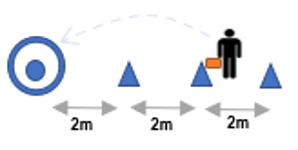
Spanish
30 minutes per week
Make a teddy bear poncho
The poncho, consisting of a rough, brightly coloured, hand-loomed cloth, was worn in early cultures of Latin America. However, it has lots of other names, depending on which Latin American country you are in.
In Columbia, it is called a ruana (rr-oo-ana), a pala (pa-la) in southern Brazil, a chamanto (cha-man-toh) in central Chile, a jorongo (ho-ron-go), a serape (seh-ra-pe) or gabán (ga-bahn) in Mexico.
You will need: Brown paper bag (only if available) or A4 paper (any colour), a teddy bear or doll, scissors, textas, crayons or pencils.
What to do: Fold your A4 paper in half widthways.
Use your scissors to cut a semi-circle in the middle of the folded edge of your paper.
If you have a paper bag, you will only need to cut a semi-circle on the bottom edge of the bag.
Decorate your poncho and place it over your teddy bear or doll’s head.
Take a photo if you can and send me a picture of your teddy!
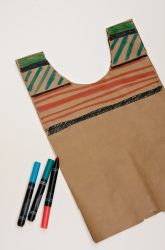
Music
60 minutes per week
Listen again to the piece 'Hoe-Down' by Copland. Click here
Play the beat with the instrument you made and try and play some of the rhythms you hear that are repeated in the song.
I would like you to say and play the following ostinato using your instrument:
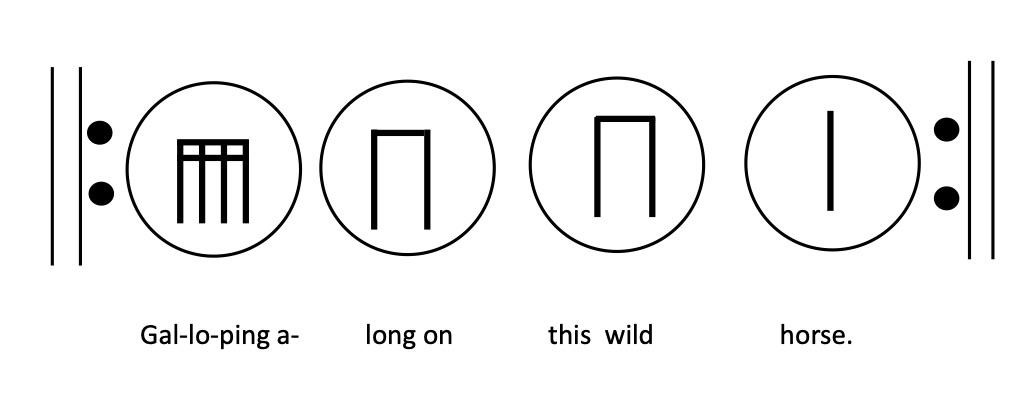
Have a go at saying the words and playing it largo. Slowly get faster at playing this until you are at the tempo of Hoe-Down. Play this ostinato through the A section of the song.
Make your own ostinato to play during the A section of Hoe-Down.
Start with the words you want to say in your ostinato and see if you can make the rhythms fit the words.
Requirements:
4 beats long. If you want a challenge, make it 8 beats long.
Year 3: using rhythms ta, ti ti, saa, tika tika
Year 4: using rhythms ta, ti ti, saa, tika tika, ti tika
Your words need to reflect the mood and theme of the music.
Remember, 1 rhythm per beat circle.
Draw your rhythms in the beat circles and write the words underneath just like in the example I have given you.
Practise and play your ostinato on your own, and then play it along with the A section to Hoe-Down.
If you play an instrument, remember to keep practising the music for Hoe-Down.
See if you can play sections of it with the orchestra!
Click on the following link to get to the sheet music: Click here
Art
60 minutes per week
Greek Pots (continued from last week)
Greek key is an ancient design, made up of a long, continuous line that repeatedly folds back on itself.
It is believed that the motif symbolises a river, infinity or the eternal flow of things.
This design was used in its various forms for decoration on ancient Greek pottery.
Practise drawing this pattern continuously on a scrap of paper or in your book.
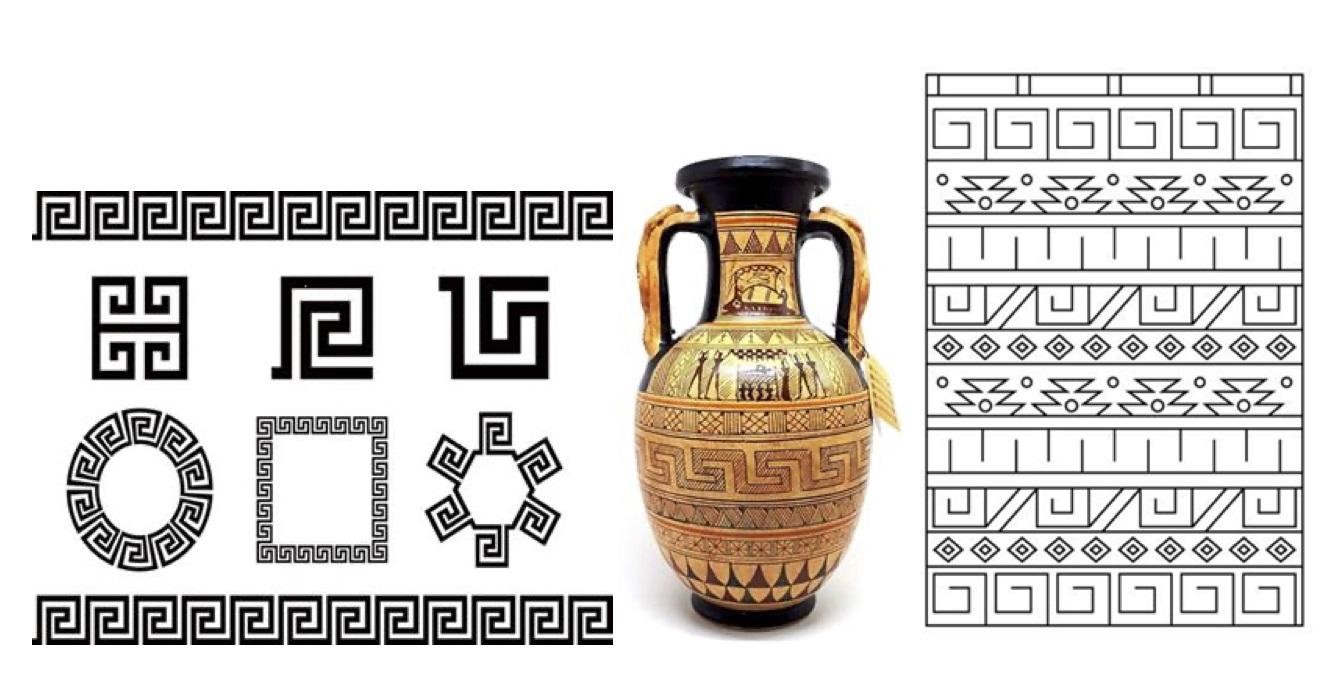
Have a look at some ancient Greek or Hellenic pottery if you can. The middle or top circumference of the pottery was sometimes used to illustrate characters from a story.
Make your own two dimensional Greek pot.
You will need a large piece of paper and cardboard (A3 if possible), a lead pencil, different sized black markers and coloured pencils ranging from red brown to gold.
If you don’t have these exact things at home, find something as close as you can so you can do the activity. You can even draw straight onto some cardboard if necessary.
Select a pot shape from the diagram below and draw it as large as you can on your page.
Draw some gently contoured rows of different widths across the pot with your pencil.
Fill in these rows with the key pattern and other Greek patterns.
Perhaps you might do a sequence of images or characters that tell a story.
Go over your drawing with a black marker (remember to choose the right size for the job and use a larger marker for colouring in larger areas). Colour in using your red brown and gold pencils.
Display
Cut around the edges of your pot, trace onto some firm cardboard and cut the cardboard into the same shape.
Glue your drawing to the cardboard then fold and glue a piece of card at the back so it will stand up.
Take a photo!
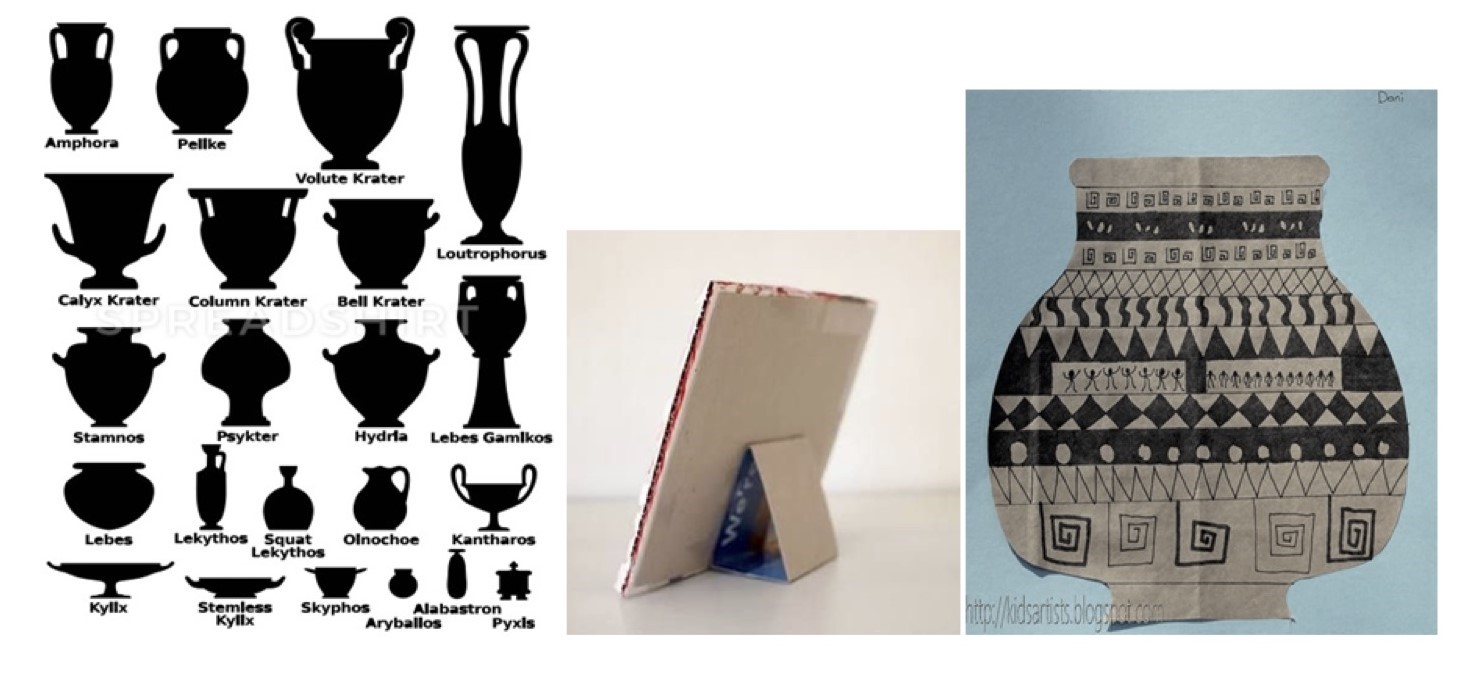
Look up the following words and use them in a sentence. Write these in your book or on a page with your name and class.
- motif
- linear
- contoured
- meander
- circumference
- Hellenic
Below is a link to an Art Prize for Learning from Home.
You can be part of a community of students for creating, contributing and connecting from home.
Library
30 minutes per week
We are learning about alliteration.
Alliteration is when two or more words in a sentence all begin with the same sound.
Alliteration is often used in headlines, jingles, poetry, tongue twisters and rhymes.
Click here to read ‘Chips and Cheese and Nana’s Knees - What is alliteration?’ from EPIC library.
Create your own alliteration about an animal of your choice.
Your alliteration can be a sentence or a poem. See examples below.
Please complete your alliteration on a piece of A4 paper in landscape style so that we can make a class book for our library.
Illustrate your work ensuring your drawing matches your alliteration.
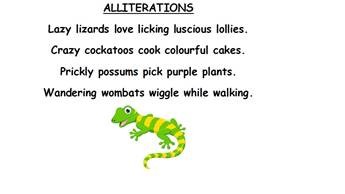
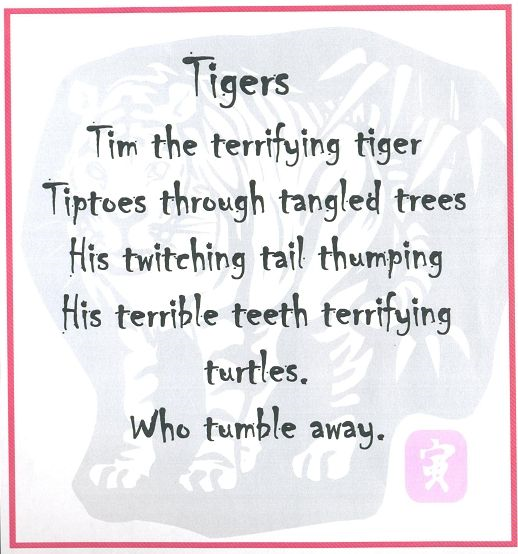
© Copyright Laburnum Primary School
